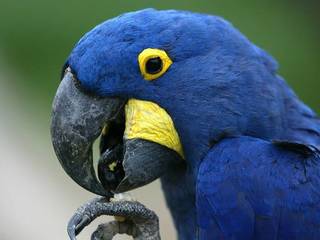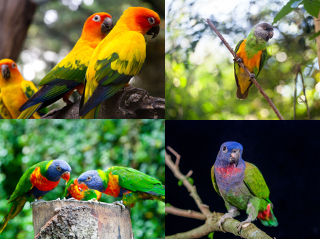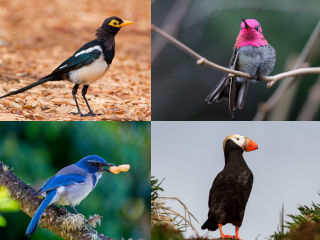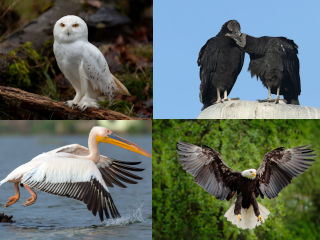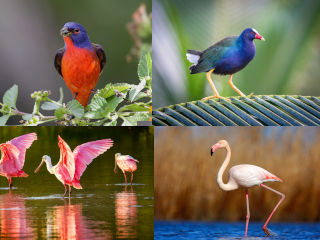California is home to an incredible variety of bird species, ranging from majestic raptors soaring high in the sky to tiny hummingbirds darting through gardens.
The state's diverse landscape and temperate climate create the perfect environment for these feathered creatures to thrive. But among the many species of birds that call California home, there are a few that stand out for their unique characteristics and fascinating behaviors.
From the brilliantly colored blue footed bobby to the clever and adaptable yellow-billed magpie, California is home to some of the most unique birds in the world. In this article, we will explore some of the most interesting and distinctive bird species that can be found in the Golden State.
1. Blue Footed Bobby
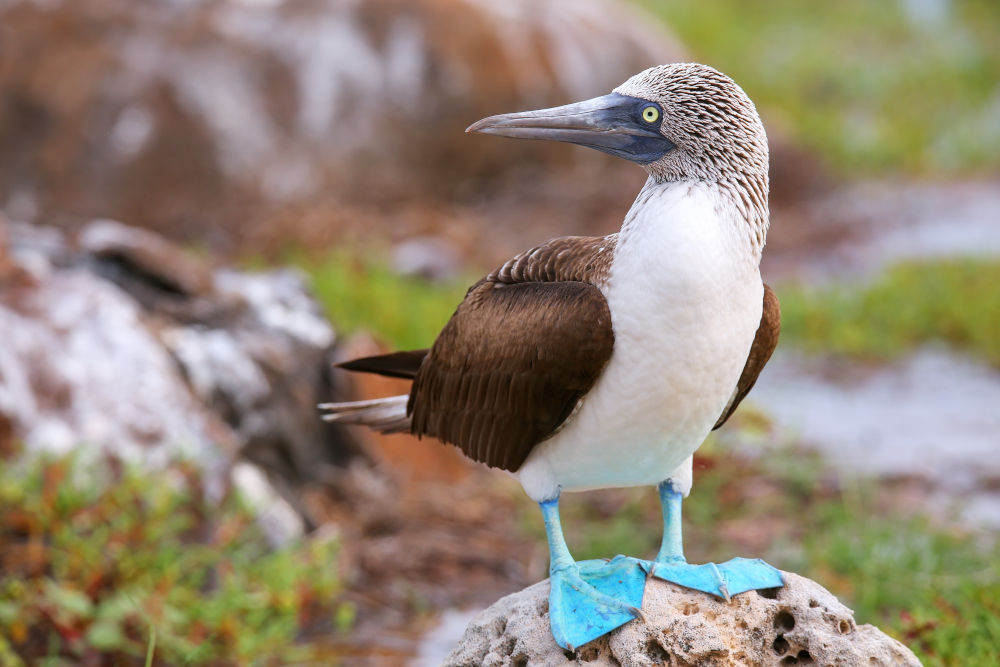
The blue-footed booby, a comical and endearing seabird, is found in the tropical and subtropical regions of the eastern Pacific Ocean. This species is famous for its distinctive blue feet, which are used as part of its courtship display, as well as its unique appearance and behaviors.
The blue-footed booby is a medium-sized bird, with a length of around 32-34 inches and a wingspan of 5.5 to 6.5 feet. Males and females have similar coloring, with brown upperparts and white underparts. They have a short, pointed bill and a long, pointed tail.
The most distinctive feature of the blue-footed booby is its bright blue feet, which are a striking shade of turquoise. The color is not caused by pigmentation, but rather by the reflection of light on the keratin proteins in the birds' feet. The brighter the blue, the more attractive the male is to the female.
The blue-footed booby is found in the tropical and subtropical regions of the eastern Pacific Ocean, ranging from California to Peru. They are often found on islands, particularly those with rocky coastlines, where they can nest and breed.
Blue-footed boobies are known for their distinctive courtship displays, which involve the male showing off his bright blue feet to the female. The male will lift his feet up and down in a dance-like motion, while whistling and spreading his wings. If the female is impressed, she will mate with him and the pair will begin to build a nest.
The blue-footed booby is a fish-eating bird, and will dive into the water from a height of up to 80 feet to catch fish. They are also known to feed on squid and other marine creatures. They have a special adaptation that allows them to dive quickly and efficiently: they tuck their wings in close to their body and plunge straight down, using their strong neck muscles to cushion the impact.
2. Anna’s Hummingbird
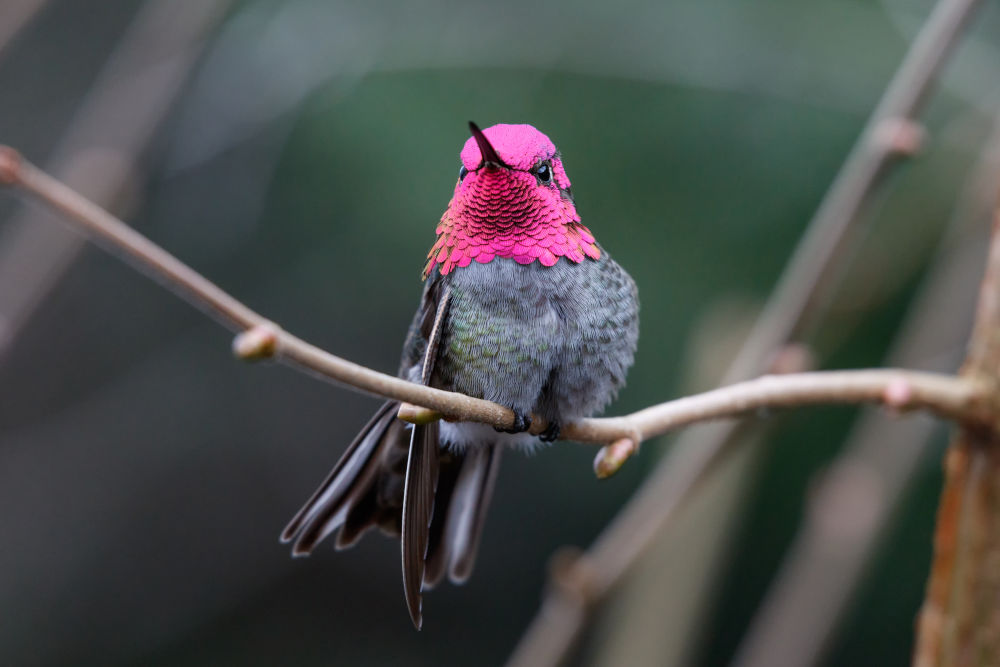
Anna's hummingbird is known for its distinctive iridescent feathers, which are bright green on the back and crown, and a vibrant reddish-pink on the throat and forehead of males. Females and juveniles have similar green feathers but lack the bright pink throat patch. The birds have a small, slightly curved bill and are about 3.9 inches in length.
Anna's hummingbirds are highly territorial and aggressive, especially during breeding season when males will defend their feeding and nesting areas vigorously.
They feed mainly on nectar from flowers, but also eat small insects and spiders for protein. They are known for their ability to hover in place while feeding, using their wings to create a humming sound that gives them their name.
Anna's hummingbirds breed throughout the year, although their breeding season peaks in the spring and summer months. They build small, cup-shaped nests out of plant fibers and spider webs, typically in trees or shrubs. Females lay two eggs, which hatch after about two weeks. The young hummingbirds fledge after about three weeks and are independent within a few days.
Anna's hummingbirds are a common sight in gardens and parks throughout their range, and their bright colors and acrobatic flying make them a popular bird for birdwatchers and photographers to observe and capture in their natural habitats. They are also an important pollinator for many plants, making them a valuable species for the ecosystem.
3. Costa’s Hummingbird
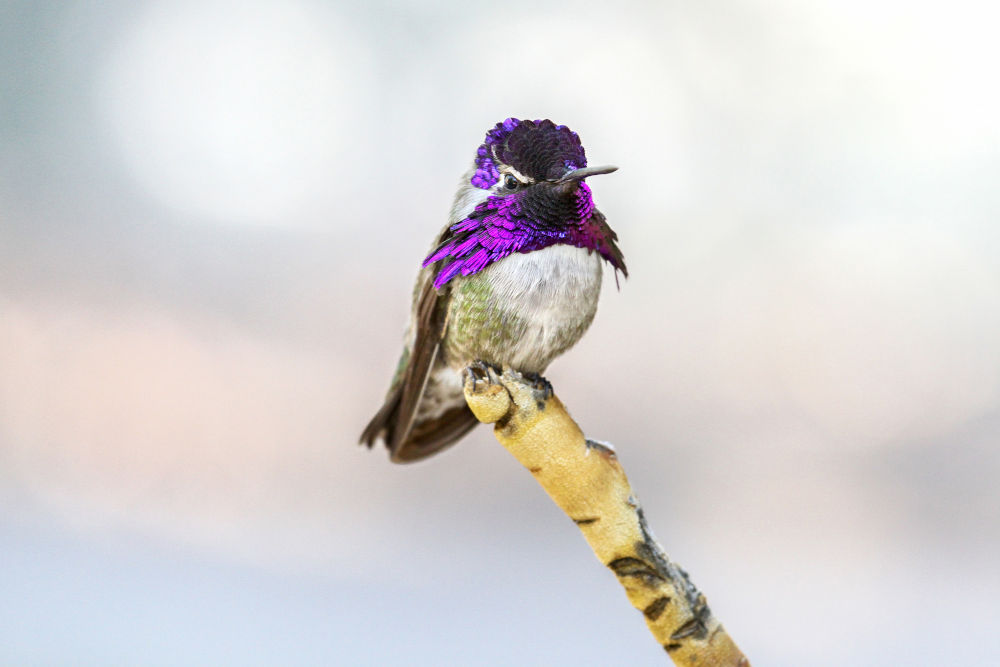
Costa's Hummingbird is a species of hummingbird found in the southwestern United States and Mexico. It is named after the French ornithologist Louis Marie Pantaleon Costa.
Costa's Hummingbirds have a distinctive violet crown and throat patch, with a grayish-green back and wings. The male has a bright purple gorget (throat patch), which can appear black in some lighting conditions, and a slightly curved bill. The female is less colorful, with a greenish-gray crown and back, and a white throat with dusky spots.
These hummingbirds are usually found in arid and semi-arid habitats, such as desert scrub, chaparral, and sagebrush. They are known to feed on nectar from a variety of flowers, including ocotillo, agave, and penstemon.
Costa's Hummingbirds are known for their distinctive buzzing sound, which is produced by their rapid wing beats. Males use this sound to attract females during breeding season, and also to defend their territories from other males.
These birds are relatively small, with a length of around 3.5 inches and a weight of about 0.1 to 0.15 ounces. They have a lifespan of around 5 years in the wild. Costa's Hummingbirds are a popular species for birdwatching, and can be observed in many parks and natural areas throughout their range.
4. Black Oystercatcher
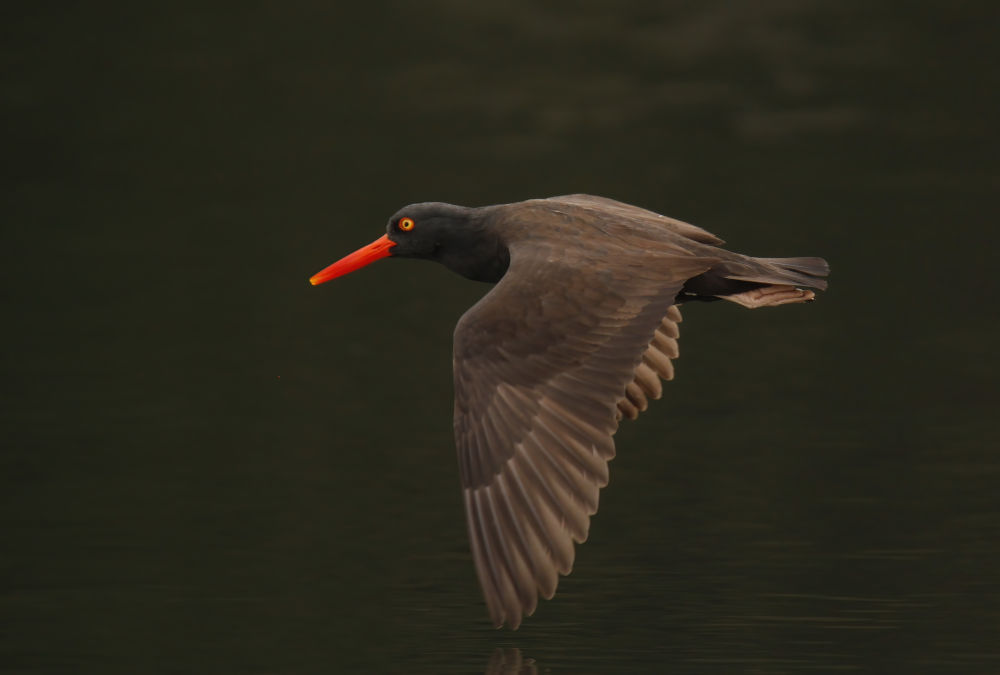
The Black Oystercatcher is a species of bird that belongs to the oystercatcher family. It is found along the Pacific coast of North America, from Alaska to Baja California.
These birds are easily recognized by their black feathers, long red bills, and pink legs. They have a distinctive call that sounds like a high-pitched whistle. Black Oystercatchers can grow up to 18 inches in length, and have a wingspan of up to 35 inches.
Black Oystercatchers are primarily found along rocky shores, where they feed on mollusks, crabs, and other small invertebrates. They use their strong beaks to pry open shells, and will often use rocks to smash them open.
These birds are monogamous and typically mate for life. They build their nests on rocky outcroppings or other elevated locations near the shore, using grasses, seaweed, and other plant materials to construct a shallow depression. The female usually lays 2-3 eggs, which both parents take turns incubating for around 24 to 28 days.
5. Surf Scoter
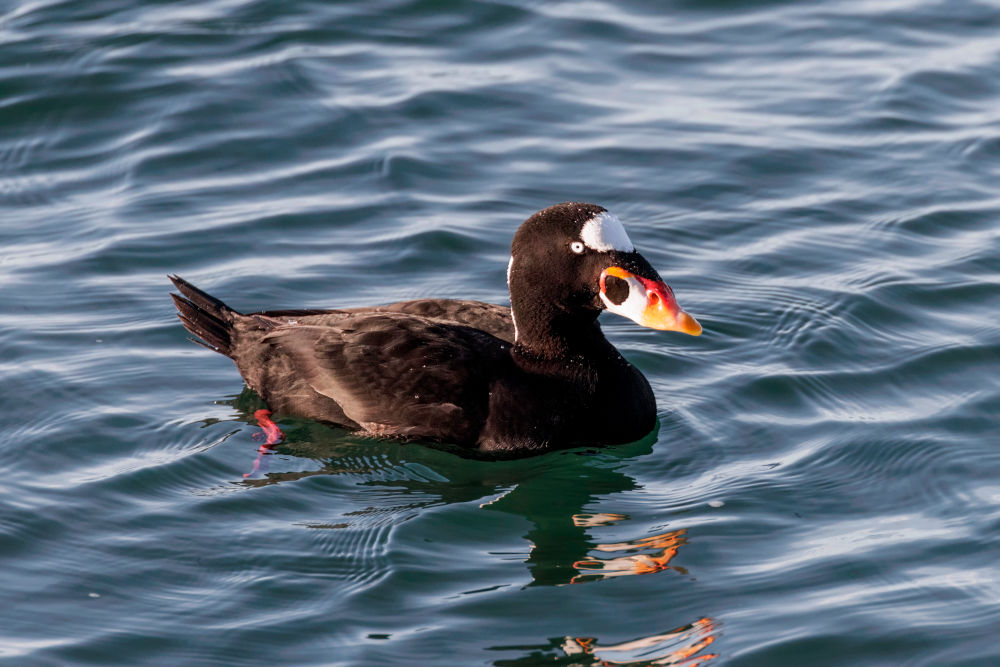
The surf scoter, also known as the sea coot, is a large sea duck that is found in the coastal waters of North America. These birds are known for their striking black and white plumage, as well as their unique bill shape, which is adapted for feeding on a variety of shellfish and other marine invertebrates.
Surf scoters are primarily found in coastal waters along the Pacific and Atlantic coasts of North America. During the breeding season, which typically lasts from May to July, they can be found in the northern parts of their range, including Alaska, Canada, and parts of the northeastern United States. During the winter, they migrate southward to areas along the western coast of the United States, as well as to parts of Mexico and the Caribbean.
Surf scoters are highly social birds and are often found in large flocks during the winter months. They are also known for their diving abilities, which allow them to feed on a variety of shellfish and other marine invertebrates.
Their bills are uniquely shaped, with serrated edges that help them to break apart the hard shells of their prey. In addition to shellfish, they may also feed on fish, crabs, and other small aquatic creatures.
Surf scoters typically build their nests on the ground, often in areas that are covered by dense vegetation. The female selects the nest site and constructs the nest by pulling together a mixture of grasses, leaves, and other plant material, which she arranges in a shallow depression in the ground. The female then lines the nest with down feathers to provide insulation for the eggs.
The female surf scoter typically lays between 5 to 9 eggs, which are incubated for approximately 25 to 30 days. During this time, the female will spend most of her time on the nest, while the male will usually stay nearby to provide protection from predators. Once the eggs hatch, the young chicks will leave the nest within a few hours and follow their mother to the nearest body of water.
It is worth noting that surf scoters do not build elaborate nests like some other bird species. Instead, their nests are simple and relatively flat, with minimal structure to protect the eggs from the elements. This is likely due to the fact that surf scoters often nest in areas with dense vegetation that provides natural cover and protection from the elements.
6. Tufted Puffin
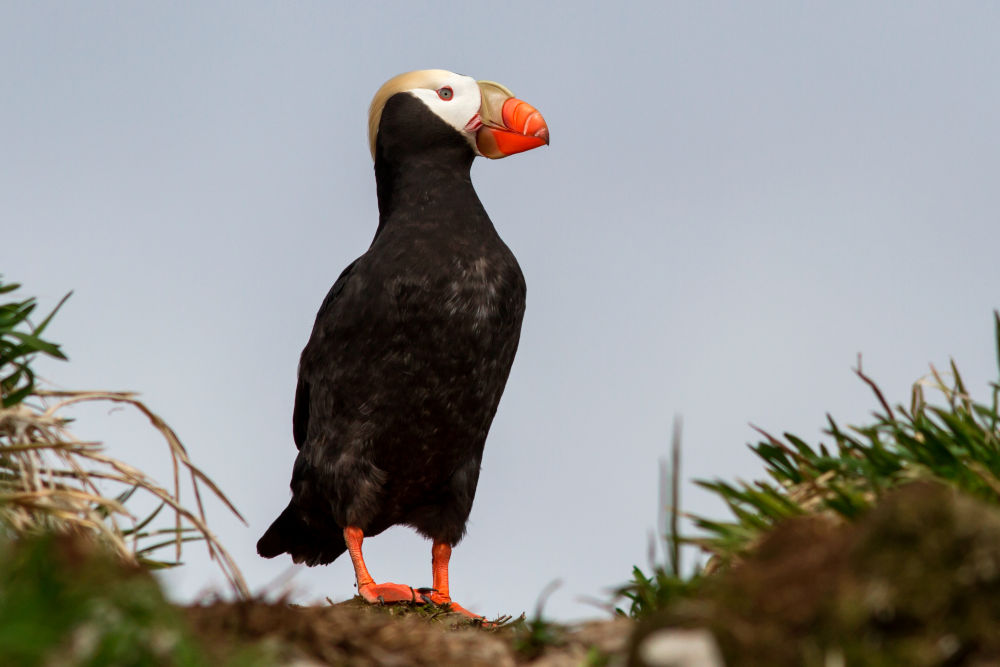
The tufted puffin is a seabird that belongs to the auk family, which also includes the puffin, razorbill, guillemot, and murre. It is a pelagic bird that spends most of its life at sea and only comes to land during the breeding season.
Tufted puffins are medium-sized birds that measure about 15-18 inches in length and have a wingspan of about 24-25 inches. They are characterized by their distinctive tufts of yellow feathers that protrude from above their eyes, and their bright orange bills that are triangular in shape.
During the breeding season, which typically occurs from late spring to early summer, tufted puffins gather in large colonies on rocky cliffs and offshore islands along the North Pacific coast, from Alaska to California, as well as in parts of Russia and Japan. They nest in burrows or crevices in the rocks, and both the male and female take turns incubating the egg and feeding the chick.
Tufted puffins feed on small fish, such as herring and sand lance, as well as squid and crustaceans. They are excellent swimmers and divers, capable of diving to depths of up to 200 feet to catch their prey. They use their wings to swim through the water, and their webbed feet to steer and maneuver.
7. Pelagic Cormorant
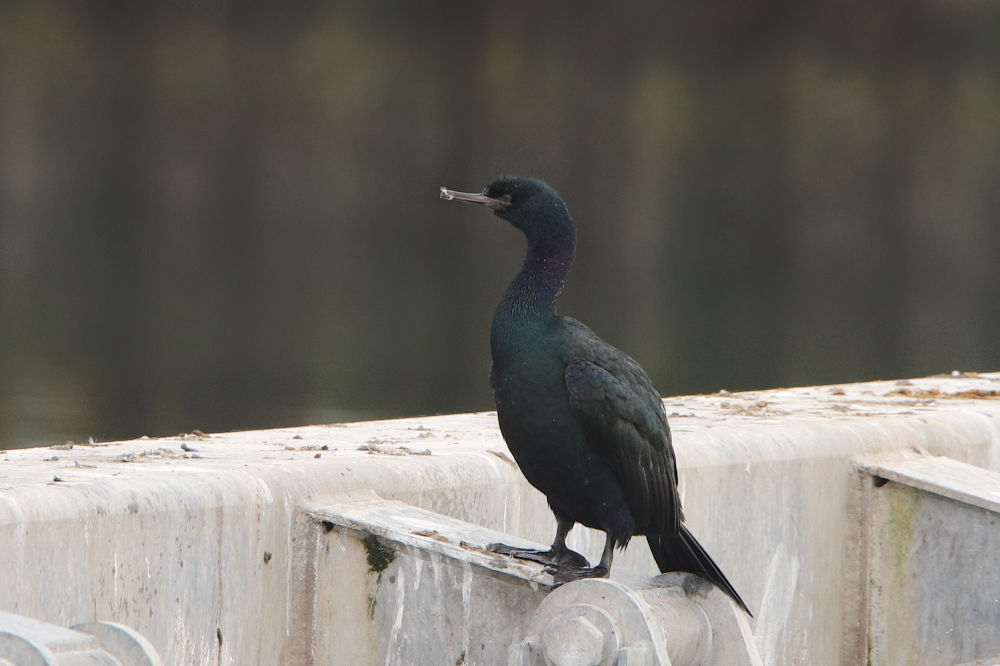
The pelagic cormorant, also known as the pelagic shag, is a small to medium-sized seabird that belongs to the cormorant family. Its scientific name is Phalacrocorax pelagicus, and it is found along the western coast of North America, from Alaska to California.
Pelagic cormorants are about 18-20 inches in length and have a wingspan of about 34-38 inches. They have a sleek black body with a short tail and a long, slender neck. They have a distinctive yellow-orange throat patch that is brighter during breeding season. Juvenile birds have a more muted coloration and lack the throat patch.
These cormorants are primarily found in rocky coastal areas, where they perch on cliffs, boulders, or in crevices. They are also known to roost on man-made structures such as jetties or piers. They are excellent swimmers and divers, using their webbed feet to propel themselves underwater in search of fish, crustaceans, and other small marine organisms.
Pelagic cormorants are monogamous and form pairs during the breeding season, which typically begins in late winter or early spring. They build their nests out of seaweed, grasses, and other materials on rocky ledges or in crevices. Females typically lay 2-4 eggs, which both parents take turns incubating for about a month. The chicks are born with a white downy covering, which is later replaced by black feathers.
While the pelagic cormorant is not currently considered endangered, it is vulnerable to habitat loss and pollution. Like many seabirds, it is also susceptible to oil spills, which can coat their feathers and make it difficult for them to swim and hunt for food.
8. California Scrub-Jay
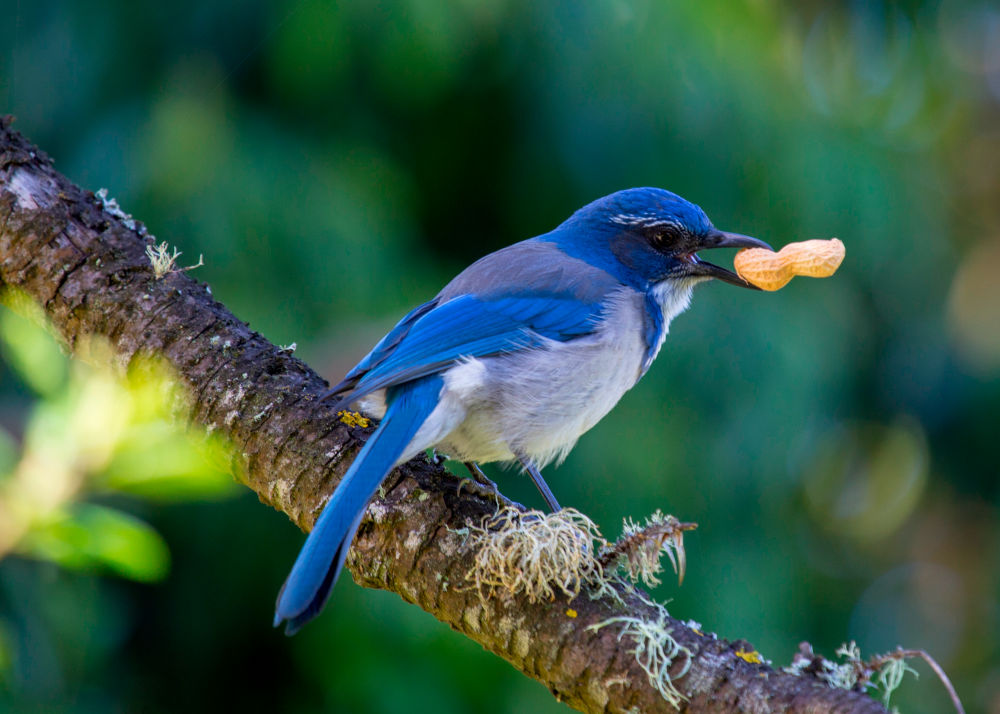
The California Scrub Jay is a medium-sized bird species that is native to the western part of North America, specifically the Pacific coast region of California.
These birds are about 11-12 inches in length and weigh about 70-100 grams. They have blue feathers on their head, wings, and tail, with gray-brown feathers on their back and a white or pale gray breast. They have a prominent crest on their head which they can raise or lower as a form of communication.
California Scrub Jays are highly adaptable and can be found in a variety of habitats, including oak woodlands, chaparral, and suburban areas. They are omnivorous, feeding on a variety of foods including insects, nuts, fruits, and small vertebrates.
These birds are known for their intelligence and problem-solving abilities, and have been observed caching food for later use. They also have a complex social structure and communicate with a variety of calls and body language.
California Scrub Jays are monogamous and usually mate for life. They build their nests in trees or shrubs, using twigs, bark strips, and grasses. Females lay 2-6 eggs, which they incubate for about 16-18 days. The young fledge after about 17-21 days and remain with their parents for several weeks before becoming independent.
9. Whimbrel
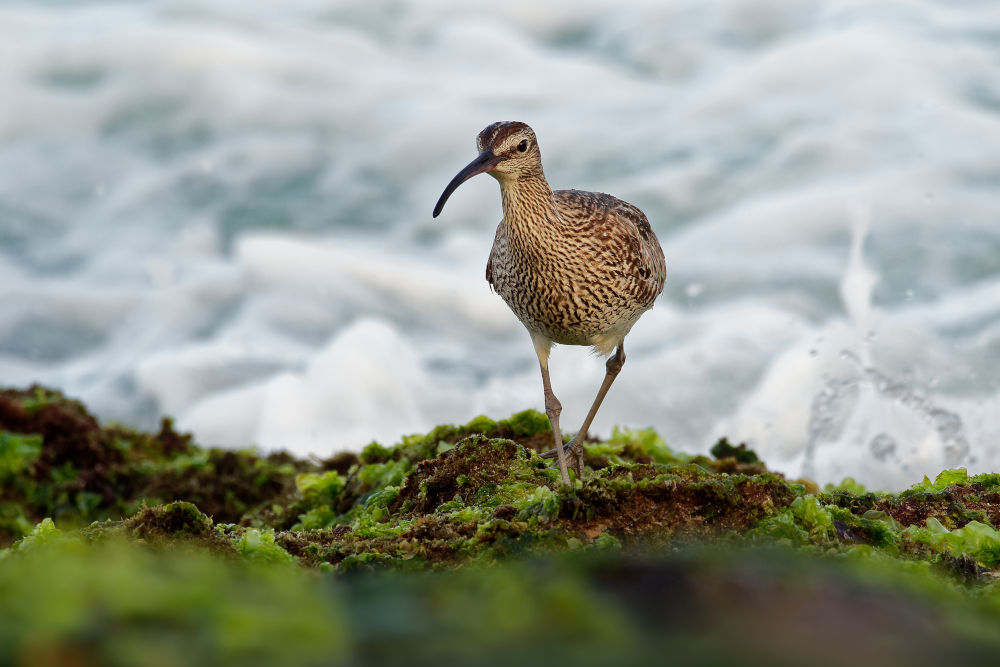
The whimbrel is a migratory bird that belongs to the family Scolopacidae, which includes sandpipers, snipes, and other similar species. It is a large, long-billed shorebird that breeds in the Arctic regions of North America and Eurasia, and spends winters in coastal areas of South America, Africa, and Australia.
The whimbrel is about 16-19 inches long and has a wingspan of 31-35 inches. It has a distinctive long, curved bill that is around 3-5 inches in length, which it uses to probe in the mud or sand for prey such as crabs, worms, and small mollusks. The bird's plumage is a mottled brown with dark streaks, and it has a white belly and eyebrow stripe.
During the breeding season, whimbrels can be found in open tundra and coastal areas in the Arctic, where they nest on the ground in shallow depressions. They typically lay a clutch of four eggs, which are incubated by both parents for around 25-30 days. After hatching, the chicks leave the nest within a few hours and are able to forage for food with their parents.
Whimbrels are highly migratory and travel long distances to reach their wintering grounds. During migration, they can be seen in large flocks along coastal areas, where they stop to rest and feed. The whimbrel has a distinctive call that is often described as a "whistle" or "curlew-like," and is used to communicate with other birds during migration.
In some cultures, the whimbrel is considered a symbol of good luck or protection. In Norse mythology, the god Odin is sometimes depicted with two whimbrels on his shoulders.
The whimbrel's long bill is highly specialized for probing into mud and sand to find the bird’s prey. They also use their bill to catch insects and small crustaceans in shallow water.
The whimbrel's call is often described as a loud, melodious whistle or trill that rises and falls in pitch. It has been compared to the sound of a flute or a curlew's call.
The call is usually made in flight or when the bird is on the ground, and is used for communication between birds during migration or while defending territory during the breeding season. The whimbrel's call is a distinctive feature of its presence and can help birders and researchers identify the species in the field.
10. Yellow-billed Magpie
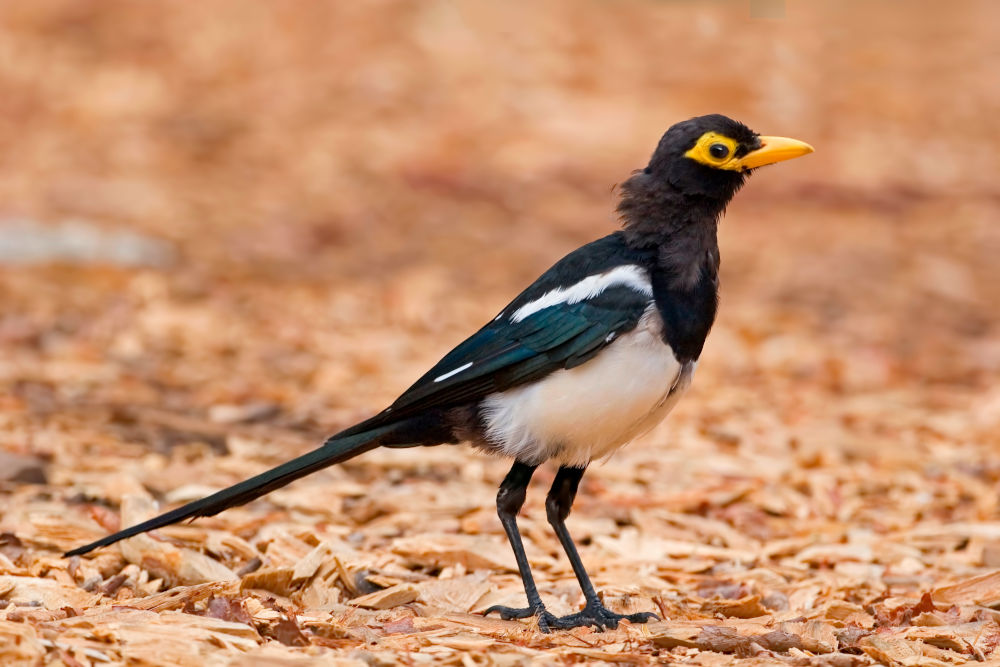
The yellow-billed magpie is a bird species that is native to California in the United States. It is one of only two species of magpie that are found in North America, the other being the black-billed magpie.
The yellow-billed magpie is easily recognizable due to its striking appearance. It has a black and white plumage, with a distinctive bright yellow bill and yellow eye patch. The bird is relatively large, measuring about 18 inches in length and weighing around 6.5 ounces.
Yellow-billed magpies are social birds and live in groups called "tribes". They are known for their intelligence and curiosity, and are often observed playing and engaging in complex social behaviors. They are also known for their vocalizations, which include a variety of calls and mimicry of other bird species.
The yellow-billed magpie feeds on a variety of foods, including insects, small rodents, seeds, and fruits. It is an important seed disperser for many native plant species in California.
Unfortunately, the yellow-billed magpie population has declined significantly in recent years, largely due to habitat loss and fragmentation, as well as pesticide use. The species is currently listed as a species of special concern in California, and efforts are being made to conserve and restore its habitat.
The yellow-billed magpie's range is limited to California's Central Valley and surrounding foothills. Its range has historically been restricted to the Sacramento and San Joaquin Valleys, but it has expanded its range to include parts of the Central Coast and southern California.
The yellow-billed magpie is considered to be a species of special concern in California due to habitat loss, fragmentation, and pesticide use. Conservation efforts include habitat restoration and protection, nest box programs, and public education to reduce pesticide use.
ConclusionIn conclusion, California is home to an incredibly diverse range of unique birds, thanks to its varied landscape and climate. From the majestic bald eagle to the colorful western bluebird, California's avian population offers a fascinating glimpse into the natural world. With its numerous protected habitats and national parks, birdwatchers and nature enthusiasts can easily explore and observe these remarkable creatures up close.
California's birds not only provide a visual treat for those lucky enough to spot them, but they also play an essential role in maintaining the state's delicate ecosystem. As such, protecting and preserving these birds and their habitats should be a priority for all who appreciate the wonders of nature.
FAQ
Do California birds migrate?
Yes, many birds in California migrate. California is home to a diverse array of bird species, with some residing in the state year-round and others migrating to and from California for breeding, feeding, or overwintering.
Some of the migratory birds that visit California include the Rufous Hummingbird, Swainson's Thrush, Yellow Warbler, Western Tanager, and Wilson's Warbler. These birds typically breed in North America and then migrate to Central and South America for the winter months, stopping in California during their journey for food and rest.
What california bird sings at night?
One bird species that is known to sing at night in California is the Northern Mockingbird (Mimus polyglottos). This bird is often heard singing its complex and varied songs during the day, but it is also known to sing at night, particularly during the breeding season in the spring and summer.
Mockingbirds are found throughout California and are known for their ability to imitate the songs of other birds and even sounds from the environment, such as car alarms and sirens. Their nocturnal singing can be especially prominent in urban areas, where the sounds of the city are quieter at night.

